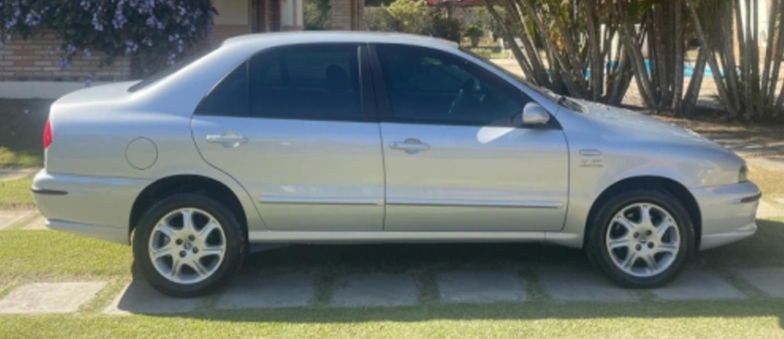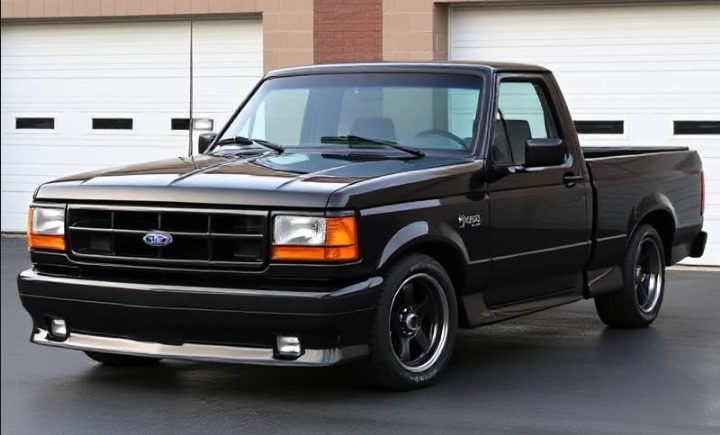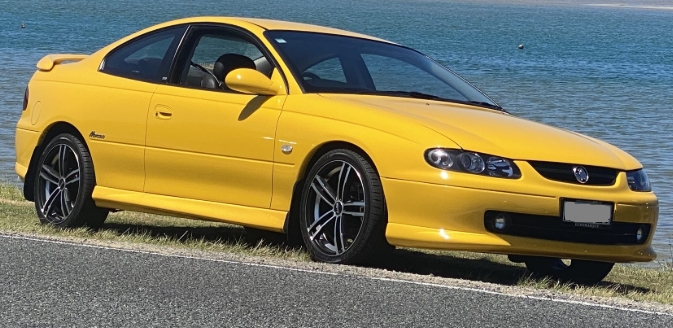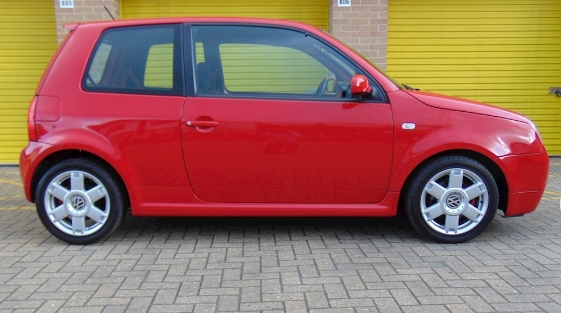The Fiat Marea: A Tale of Two Continents
In the landscape of 1990s automotive design, few cars encapsulate the story of a brand’s ambition, practicality, and divergent global identity quite like the Fiat Marea. Born as the sensible, family-oriented sibling to the daring Bravo and Brava hatchbacks, the Marea was designed to be a dependable European workhorse. Yet, its story didn’t end there. It found a second, more dramatic life in South America, where it transformed from a humble saloon and estate into a celebrated and notorious performance icon. This is the story of the Fiat Marea, a car of two distinct evolutions.
The Genesis: Replacing a Legacy (1996)
By the mid-1990s, Fiat was on a mission to rejuvenate its image. The boxy, utilitarian Tempra, which had served since 1990, was looking decidedly dated against sleeker competition from Ford, Opel, and Renault. The solution was the “Type Two” platform project, a versatile architecture that would underpin a new family of cars designed to propel Fiat into the new millennium. The first fruits of this project were the 1995 European Car of the Year-winning Bravo (three-door) and Brava (five-door) hatchbacks. A year later, in September 1996, their larger counterparts were unveiled: the Fiat Marea.
The Marea was launched in two distinct body styles:
- Marea: A traditional four-door saloon (sedan).
- Marea Weekend: A five-door estate (station wagon).
Designed at the Fiat Centro Stile, the Marea shared its frontal styling and first two doors with the Brava hatchback, giving it an immediate family resemblance. However, from the B-pillar rearward, it was an entirely new creation. The saloon was conservatively styled, with a high boot line that provided impressive luggage capacity (430 litres) but was considered by some critics to be visually heavy.
The Marea Weekend, however, was where Fiat’s design ingenuity truly shone. It featured unique, high-mounted vertical taillights that curved up the D-pillars, maximising the width of the tailgate opening. Its most celebrated feature was the innovative “Bumper Gate”—a split tailgate where the lower section, part of the rear bumper, could fold down independently. This created a perfectly flat, level loading sill, making it effortless to slide heavy items into its cavernous 500-litre boot. This practical touch made the Weekend an instant favourite among families and businesses.
.
THIS is GOOD stuff if your car is in need:

.
The First Wave: European Models and Trims (1996-1999)
Upon its European launch, the Marea was offered in a clear, three-tiered trim structure, a common practice for Fiat at the time.
- SX: The entry-level model. It was spartan but functional, typically equipped with power steering, a driver’s airbag, central locking, and a basic radio cassette player. It often came with steel wheels and unpainted black bumpers on the very earliest models.
- ELX: The mid-range, volume-selling trim. The ELX added significant comfort and aesthetic upgrades, including body-coloured bumpers, electric front windows, improved upholstery (often patterned velour), and the availability of optional air conditioning and alloy wheels.
- HLX: The range-topping trim level. The HLX (High Level Executive) was generously equipped with standard features like air conditioning, alloy wheels, velour upholstery, front fog lights, electric rear windows, and often a trip computer. This trim was typically reserved for the more powerful engines in the range.
The initial engine lineup was comprehensive, offering a wide choice of petrol and diesel units to cater to every need, from economy to performance.
Petrol Engines:
- 1.4 12v: A 80 hp unit borrowed from the Bravo/Brava, offering basic performance for the entry-level models. It was phased out relatively early.
- 1.6 16v: The backbone of the range. This 103 hp engine provided a perfect balance of performance and fuel economy, making it the most popular choice across SX and ELX trims.
- 1.8 16v: A more powerful 113 hp engine that offered brisk performance, mainly available in the ELX and HLX grades.
- 2.0 20v: The flagship engine. This was Fiat’s much-lauded five-cylinder “Pratola Serra” engine, producing 147 hp. Its unique, warbling soundtrack and smooth power delivery gave the Marea HLX a characterful, almost premium feel, setting it apart from its four-cylinder rivals.
Diesel Engines:
- 1.9 TD: A turbodiesel available in two states of tune: 75 hp (TD 75) and 100 hp (TD 100). These were robust, conventional indirect injection engines.
- 2.4 TD: A five-cylinder turbodiesel, sharing its architecture with the 2.0 petrol. With 124 hp, it provided strong torque and made the Marea a formidable motorway cruiser.
The Mid-Life Refresh: Refinement and JTD Power (1999-2003)
In late 1999, the Marea range received a significant facelift for the 2000 model year. The changes were subtle but effective, aimed at modernising the car and aligning it with Fiat’s evolving design language.
Externally, the most noticeable change was a new front grille that incorporated Fiat’s blue, wreath-style corporate badge. The front bumpers were redesigned, and body-coloured bumpers became standard across the entire range, giving the car a more upmarket look.
Inside, the dashboard and interior trims were updated with better quality materials and new color schemes. The instrument cluster was revised for better clarity, and the overall fit and finish were improved.
The most important evolution, however, was under the bonnet. Fiat was a pioneer of common-rail diesel technology, and the facelifted Marea became a prime beneficiary of the new JTD (uniJet Turbo Diesel) engines. These engines transformed the Marea’s diesel offerings from noisy and agricultural to smooth, quiet, and powerful.
- 1.9 JTD 105: Replacing the old TD 100, this engine produced 105 hp (later updated to 110 hp) with vastly superior refinement, fuel economy, and torque. It became one of the most desirable engines in the range.
- 2.4 JTD 130: The five-cylinder diesel was also updated to common-rail technology. Power rose to 130 hp, and it delivered immense pulling power, making the Marea Weekend 2.4 JTD a perfect tow car and long-distance hauler.
The petrol engine lineup was also rationalised. The underwhelming 1.4 12v was long gone, and the 2.0 20v was uprated to 155 hp in some markets. A new “Stile” trim level was introduced in some countries towards the end of its life, effectively a run-out special offering good value.
European production of the Marea saloon ceased in 2002, while the more popular Marea Weekend continued until 2003. Its successor was the Stilo MultiWagon, with the larger Croma II later filling the role of a D-segment estate.
A Second Life: The South American Saga (1998-2007)
While the Marea was a competent but ultimately unremarkable player in Europe, its story in South America—particularly Brazil—was entirely different. Production began at Fiat’s Betim plant in Brazil in 1998. Here, the Marea was positioned as a premium, sophisticated family car, a significant step up from the locally produced Tempra.
The Brazilian Marea initially mirrored the European trim levels (SX, ELX, HLX) and engine choices, including the 2.0 20v five-cylinder. However, the market soon developed unique variants tailored to local tastes and demands.
The most legendary of these was the Marea Turbo, launched in 2000. Fiat’s engineers took the 2.0-litre, 20-valve five-cylinder engine and fitted it with a turbocharger and intercooler. The result was a staggering 182 hp, turning the unassuming family saloon and Weekend into bona fide performance cars. Capable of 0-100 km/h in under 8 seconds and a top speed exceeding 220 km/h, the Marea Turbo became an instant cult classic in Brazil—a “sleeper” that could challenge imported sports cars.
The South American Marea also had a different evolutionary path. While Europe wound down production, the Brazilian Marea received a unique facelift in 2001. This update included a redesigned rear end for the saloon, controversially borrowing its taillight design from the upscale Lancia Lybra.
Engine offerings also diverged. Brazil received a 2.4-litre 20v five-cylinder petrol engine producing 160 hp, effectively replacing the early 2.0. Towards the end of its life, the ubiquitous 1.6 16v engine was adapted to run on ethanol, a common requirement in the Brazilian market.
However, the Marea’s legacy in Brazil is a complex one. It is remembered with a mixture of adoration and fear. The powerful five-cylinder engines, especially the Turbo, were highly complex for the time. A lack of specialist mechanics and the high cost of imported parts meant that improper maintenance could lead to catastrophic (and expensive) engine failure. This earned it the unfortunate nickname “Bomba” among some circles, a cautionary tale for secondhand buyers. Despite this, well-maintained examples, particularly the Marea Turbo, remain highly sought-after by enthusiasts today.
Brazilian production of the Fiat Marea finally ended in 2007, a full eleven years after its European debut. Its place in the market was eventually taken by the Fiat Linea.
Conclusion: An Understated and Enduring Legacy
The Fiat Marea’s evolution tells the story of a car that was more than just a single product; it was a global platform adapted for different worlds. In Europe, it was a practical, reliable, and often charming family car, with the Marea Weekend standing out as a masterpiece of functional design, and the five-cylinder versions offering a dash of Italian character in a mundane segment. It fulfilled its role competently before being retired in favor of newer models.
In South America, it became something more: an aspirational symbol, a performance legend, and a lesson in maintenance. Its dual legacy—as a dependable family hauler on one continent and a high-strung cult classic on another—makes the Fiat Marea one of the most fascinating and multifaceted cars of its era. It was a vehicle that truly lived two very different, but equally significant, lives.







